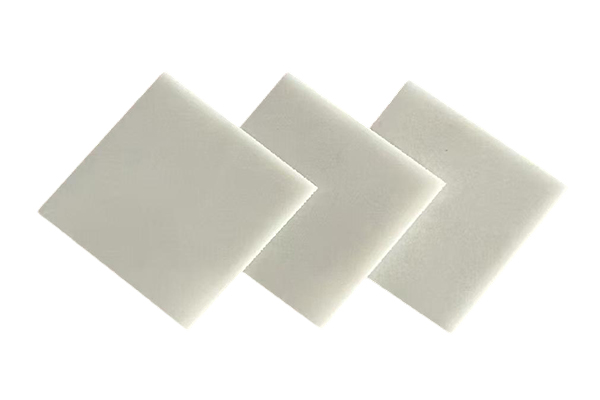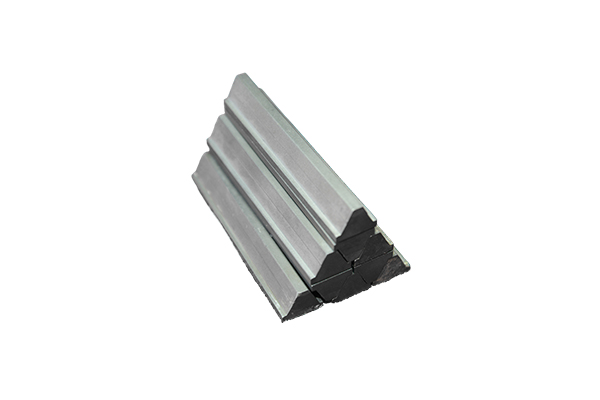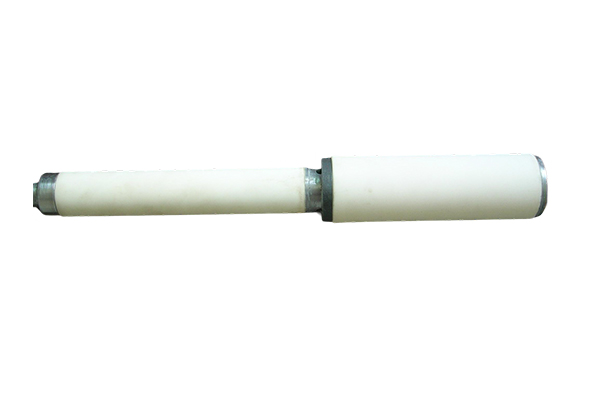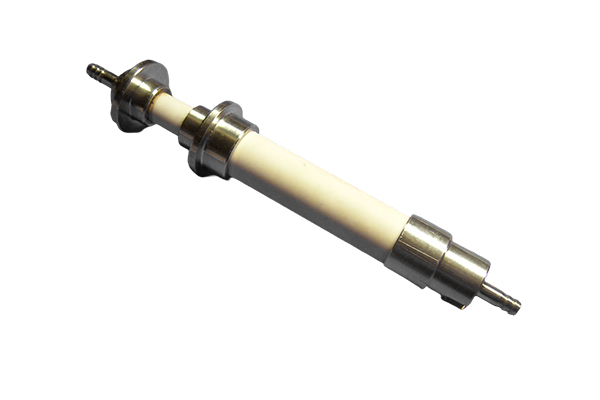Why is ceramic base often preferred in high-precision equipment?
Release Time : 2025-04-08
With the development of science and technology and the continuous improvement of precision requirements, the application scope of high-precision equipment is becoming increasingly wide. From semiconductor manufacturing to optical instruments to medical equipment, these fields have placed extremely high demands on the stability and precision of equipment. In this context, ceramic base has gradually become the preferred material in many high-precision equipment due to its unique physical and chemical properties.
1. Excellent mechanical properties
Ceramic materials are known for their excellent mechanical properties, especially their hardness and wear resistance. In high-precision equipment, any slight deformation or wear may cause equipment performance degradation or even failure. Ceramic base has extremely high hardness and can effectively resist external impact and wear, ensuring long-term stable operation of the equipment. In addition, ceramic materials also have good compressive strength and elastic modulus, which enables them to maintain their shape under high pressure and provide solid support for the equipment.
For example, in the semiconductor manufacturing process, wafer cutting machines require extremely stable platforms to ensure cutting accuracy. Ceramic base can provide sufficient rigidity and stability to avoid errors caused by vibration or deformation, thereby improving production efficiency and product quality.
2. Excellent thermal stability
High-precision equipment usually needs to work under strict temperature control, because temperature changes can cause materials to expand or contract, which in turn affects the accuracy of the equipment. Ceramic materials have a low coefficient of thermal expansion, which means that they hardly change size when the temperature changes. This property is particularly important for equipment that needs to work in different temperature environments.
Take laser interferometers as an example. This type of equipment is used to measure displacements at the micron or even nanometer level. If the base material has a high coefficient of thermal expansion, even a small temperature fluctuation can cause deviations in the measurement results. The ceramic base can significantly reduce this error and ensure the accuracy of the measurement results due to its low coefficient of thermal expansion.
3. Chemical inertness and corrosion resistance
In some specific application scenarios, the equipment may be exposed to various chemicals or in a corrosive environment. Traditional metal materials are susceptible to oxidation or other chemical reactions, resulting in performance degradation or damage. In contrast, ceramic materials have high chemical inertness, can resist the erosion of most acid and alkali solutions, and maintain long-term stability and reliability.
In the biomedical field, many experimental equipment needs to handle various chemical reagents and biological samples. Ceramic base not only resists chemical corrosion, but also prevents microbial attachment and growth, which is essential for keeping equipment clean and extending its service life.
4. Electrical insulation performance
In addition to the above physical and chemical properties, ceramic materials also have excellent electrical insulation properties. In some high-precision equipment, such as electron microscopes or integrated circuit test equipment, static electricity accumulation or current leakage may interfere with the normal operation of the equipment. Ceramic base can effectively isolate the circuit part, prevent charge accumulation and accidental discharge, and thus protect the safe operation of the equipment.
5. Easy processing and customized design
Despite the high hardness of ceramic materials, modern processing technology has been able to achieve precise processing of them. Through advanced CNC machine tools and other processing methods, ceramic materials can be made into various complex shapes and structures to meet the needs of different equipment. In addition, ceramic base can also be customized according to specific applications, such as adding special coatings or embedding other functional components to further enhance its performance.
6. Environmental protection and sustainable development
With the increasing global attention to environmental protection, choosing environmentally friendly materials has become a trend. Ceramic materials are mostly made of natural minerals, the production process is relatively environmentally friendly, and they are recyclable. Compared with some synthetic materials, ceramic materials have less impact on the environment throughout their life cycle, which is in line with the concept of green manufacturing.
Ceramic base has been widely used in high-precision equipment due to its excellent mechanical properties, outstanding thermal stability, chemical inertness and corrosion resistance, excellent electrical insulation performance, easy processing and customized design. Whether it is scientific research or industrial production, ceramic base can provide a solid foundation and support for the equipment, ensuring that it can still maintain a high level of precision and stability in a complex and changing working environment.
1. Excellent mechanical properties
Ceramic materials are known for their excellent mechanical properties, especially their hardness and wear resistance. In high-precision equipment, any slight deformation or wear may cause equipment performance degradation or even failure. Ceramic base has extremely high hardness and can effectively resist external impact and wear, ensuring long-term stable operation of the equipment. In addition, ceramic materials also have good compressive strength and elastic modulus, which enables them to maintain their shape under high pressure and provide solid support for the equipment.
For example, in the semiconductor manufacturing process, wafer cutting machines require extremely stable platforms to ensure cutting accuracy. Ceramic base can provide sufficient rigidity and stability to avoid errors caused by vibration or deformation, thereby improving production efficiency and product quality.
2. Excellent thermal stability
High-precision equipment usually needs to work under strict temperature control, because temperature changes can cause materials to expand or contract, which in turn affects the accuracy of the equipment. Ceramic materials have a low coefficient of thermal expansion, which means that they hardly change size when the temperature changes. This property is particularly important for equipment that needs to work in different temperature environments.
Take laser interferometers as an example. This type of equipment is used to measure displacements at the micron or even nanometer level. If the base material has a high coefficient of thermal expansion, even a small temperature fluctuation can cause deviations in the measurement results. The ceramic base can significantly reduce this error and ensure the accuracy of the measurement results due to its low coefficient of thermal expansion.
3. Chemical inertness and corrosion resistance
In some specific application scenarios, the equipment may be exposed to various chemicals or in a corrosive environment. Traditional metal materials are susceptible to oxidation or other chemical reactions, resulting in performance degradation or damage. In contrast, ceramic materials have high chemical inertness, can resist the erosion of most acid and alkali solutions, and maintain long-term stability and reliability.
In the biomedical field, many experimental equipment needs to handle various chemical reagents and biological samples. Ceramic base not only resists chemical corrosion, but also prevents microbial attachment and growth, which is essential for keeping equipment clean and extending its service life.
4. Electrical insulation performance
In addition to the above physical and chemical properties, ceramic materials also have excellent electrical insulation properties. In some high-precision equipment, such as electron microscopes or integrated circuit test equipment, static electricity accumulation or current leakage may interfere with the normal operation of the equipment. Ceramic base can effectively isolate the circuit part, prevent charge accumulation and accidental discharge, and thus protect the safe operation of the equipment.
5. Easy processing and customized design
Despite the high hardness of ceramic materials, modern processing technology has been able to achieve precise processing of them. Through advanced CNC machine tools and other processing methods, ceramic materials can be made into various complex shapes and structures to meet the needs of different equipment. In addition, ceramic base can also be customized according to specific applications, such as adding special coatings or embedding other functional components to further enhance its performance.
6. Environmental protection and sustainable development
With the increasing global attention to environmental protection, choosing environmentally friendly materials has become a trend. Ceramic materials are mostly made of natural minerals, the production process is relatively environmentally friendly, and they are recyclable. Compared with some synthetic materials, ceramic materials have less impact on the environment throughout their life cycle, which is in line with the concept of green manufacturing.
Ceramic base has been widely used in high-precision equipment due to its excellent mechanical properties, outstanding thermal stability, chemical inertness and corrosion resistance, excellent electrical insulation performance, easy processing and customized design. Whether it is scientific research or industrial production, ceramic base can provide a solid foundation and support for the equipment, ensuring that it can still maintain a high level of precision and stability in a complex and changing working environment.







